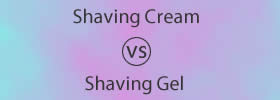Difference between HTC Butterfly and Samsung Galaxy S4
Key difference: The HTC Butterfly is a high-end phone by the HTC Corporation. The HTC Butterfly is sold in four variants: Droid DNA; J Butterfly HTL21; Butterfly X920d; and Butterfly X920e. They are all powered on a Quad-core 1.5 GHz Krait processor. The HTC Droid has the Quadcomm MDM615m, while the Butterfly variants have the Qualcomm APQ8064 chipset. They all have 2 GB of RAM. Samsung Galaxy S4 is the successor to the very popular Samsung Galaxy S3. The phone is available with either the 1.6 GHz octa-core Samsung Exynos 5 processor or the 1.9 GHz Snapdragon Fusion Pro quad-core processor, depending on the market. The S4 comes with 2 GB RAM.
 The HTC Butterfly is a high-end phone by the HTC Corporation. The phone has been quite popular all over the world; however, most people don’t know exactly how popular the phone has actually been. This is mainly because not many people know that the HTC Butterfly and HTC Droid DNA is actually pretty much the same phone, with only a few differences. The differences are only there to make the phone more regional specific.
The HTC Butterfly is a high-end phone by the HTC Corporation. The phone has been quite popular all over the world; however, most people don’t know exactly how popular the phone has actually been. This is mainly because not many people know that the HTC Butterfly and HTC Droid DNA is actually pretty much the same phone, with only a few differences. The differences are only there to make the phone more regional specific.
The HTC Butterfly is sold in four variants: Droid DNA in the United States on the Verizob Network; J Butterfly HTL21 in Japan on KDDI's au network; Butterfly X920d in Taiwan, South East Asia and India; and Butterfly X920e in China and Russia.
All the variants have most of the same features. They are all powered on a Quad-core 1.5 GHz Krait processor. The HTC Droid has the Quadcomm MDM615m, while the Butterfly variants have the Qualcomm APQ8064 chipset. They all have 2 GB of RAM and Adreno 320 graphics processor. They all have an 8 MP primary camera and a 2.1 MP secondary front facing camera. The display is a 5 inch Super LCD3 capacitive touchscreen with Corning Gorilla Glass 2. At the time of the launch the phone was the second phone in the market to feature a 1080p display. The phone has Android version 4.1, but is upgradable to Android 4.2.
The HTC Droid DNA differs from the other variants, in that it supports wireless charging, but lacks a MicroSD slot. The Droid DNA and the J Butterfly both support CDMA and LTE connections, as well as UMTS. However, only the Droid DNA comes with quad band UMTS radio. The X920d and X920e, on the other hand, do not even have LTE support. There are also some subtle differences regarding color accents, buttons and logo placement. However, these are minor and so not affect the phones.
Samsung Galaxy S4 is the successor to the very popular Samsung Galaxy S3. The company boasts new features into a slightly smaller and sleeker design. The phone’s screen has been increased to a stunning almost 5 inches with only slight decrease in size of the phone. The screen is a full HD Super AMOLED capacitive touchscreen that provides a greater resolution of 1080 pixels, almost 441ppi density. The weight of the phone has also been decreased to 130 g and the width of the phone has been reduced by 1mm. The phone has sharper and straighter lines with just curved edges. In terms of design it is quite similar to the S3. The chassis is made up of polycarbonate plastic and the display is highly sensitive that accepts touch through gloves. The phone is available with either the 1.6 GHz octa-core Samsung Exynos 5 processor or the 1.9 GHz Snapdragon Fusion Pro quad-core processor, depending on the market. It is available with 16/32/64 GB internal capacity options and if that is not enough it can be upgraded by another 64 GB using the SD slot. The S4 comes with 2 GB RAM, which has become a norm for smartphones these days.
 The phone comes with a stunning 13 MP primary camera, a 2 MP secondary camera and HD video recording capability. The S4 runs Android 4.2.2 Jelly Bean, but it has yet to be seen if it will offer an upgrade to the new Key Lime Pie version when it is available in mid-2013. The phone is available in two colors Black Mist and White Frost, though there may be chances for other colors once the phone is available for purchasing. Now for the fun part! The phone offers brand new features that are sure to pull in some big spenders. The S4 offers hovering capabilities known as Air Wave, which allows users to swipe between screens, videos, photos without actually touching the screen. Another fun feature is the Smart Scroll and Smart Pause; Smart Scroll uses a sensor and the front camera to automatically scroll when a person is done reading a certain paragraph. The scrolling can also be controlled using tilt. Smart Pause uses the sensor to pause videos automatically when the phone senses that the person is no longer looking at the screen and then resumes when the person looks back at the screen.
The phone comes with a stunning 13 MP primary camera, a 2 MP secondary camera and HD video recording capability. The S4 runs Android 4.2.2 Jelly Bean, but it has yet to be seen if it will offer an upgrade to the new Key Lime Pie version when it is available in mid-2013. The phone is available in two colors Black Mist and White Frost, though there may be chances for other colors once the phone is available for purchasing. Now for the fun part! The phone offers brand new features that are sure to pull in some big spenders. The S4 offers hovering capabilities known as Air Wave, which allows users to swipe between screens, videos, photos without actually touching the screen. Another fun feature is the Smart Scroll and Smart Pause; Smart Scroll uses a sensor and the front camera to automatically scroll when a person is done reading a certain paragraph. The scrolling can also be controlled using tilt. Smart Pause uses the sensor to pause videos automatically when the phone senses that the person is no longer looking at the screen and then resumes when the person looks back at the screen.
Group Play is a feature that allows users to use NFC or Bluetooth to tap and transfer videos, photos, music and even engage in multiplayer games with other S4 users. There are many new camera features as well including dual camera, sound & shot, drama shot, story album, cinema photo and eraser mode. Dual camera allows users to use both the cameras at the same time including when trying to take a photo. The person taking the photo can place their face to the photo taken using the secondary camera or vice-versa. Sound & Shot feature takes 9 seconds of audio when capturing a photo. Drama Shot combines all the actions from a Burst shot into one screen. Story album enables the users to create an album using their shots and audio. Cinema photo feature allows the users to animate one portion of an image, while keeping the rest simple. Eraser Mode allows users to erase objects from the image that they do not wish to include. Other features also include S Health (users can track their diet, steps, exercises, etc.), S Translator, S Voice assistant, Galaxy S Voice Drive and Integrated Optical Reader. Samsung has yet to announce the release date and the price of the S4.
The information for the detailed table about the two phones has been taken from the HTC website, engadget.com, the Samsung website, knowyourmobile.com, expertreviews.co.uk, and GSMArena.com.
|
|
HTC Butterfly (HTC Droid DNA) |
Samsung Galaxy S4 |
|
Launch Date |
November 2012 |
Q2 of 2013 |
|
Company |
HTC |
Samsung Corporation |
|
Size |
143 x 70.5 x 9.1 mm (5.63 x 2.78 x 0.36 in) |
136.6x69.8x7.9mm |
|
Display |
Super LCD3 capacitive touchscreen, 16M colors |
4.99 inches Full HD Super AMOLED capacitive touchscreen |
|
Screen |
1080 x 1920 pixels, 5.0 inches (~441 ppi pixel density) |
1080 x 1920 pixels (~441 ppi pixel density) |
|
Protection |
Corning Gorilla Glass 2 |
Corning Gorilla Glass 3 |
|
Weight |
141.7 g (4.97 oz) |
130 g |
|
2G Network |
GSM 850 / 900 / 1800 / 1900 or CDMA 800 / 1900 |
GSM 850 / 900 / 1800 / 1900 |
|
3G Network |
HSDPA 850 / 900 / 1900 / 2100 or CDMA2000 1xEV-DO |
HSDPA 850 / 900 / 1900 / 2100 |
|
4G Network |
LTE 700 (market dependent) |
LTE availability depends on the market. |
|
GUI |
HTC Sense UI 4+ |
TouchWiz UI |
|
CPU speed |
Quad-core 1.5 GHz Krait |
1.6 GHz Octa-Core Samsung Exynos 5 processor or 1.9 GHz Snapdragon Fusion Pro quad-Core processor depending on the market. |
|
GPU |
Adreno 320 |
PowerVR SGX 544MP3 |
|
OS |
Android OS, v4.1 (Jelly Bean), planned upgrade to v4.2 (Jelly Bean) |
Android 4.2.2 (Jelly Bean) |
|
Chipset |
Qualcomm Snapdragon MDM615m or APQ8064 |
Exynos 5 Octa 5410 |
|
RAM |
2 GB RAM |
2 GB |
|
SIM Size |
Micro-SIM |
microSIM |
|
Internal Memory |
16 GB (11 GB user available) |
16/32/64 GB |
|
Expandable Memory |
microSD, up to 32 GB (Market dependent) |
Expandable up to 64 GB |
|
Sensors |
Accelerometer, gyro, proximity, compass |
Accelerometer, gyro, proximity, compass, barometer |
|
Connectivity |
3.5 mm stereo audio jack, NFC capable, Compliant with Bluetooth 4.0 BLE, Wi-Fi: 802.11 a//b/g/n, micro-USB 2.0 (5-pin) port |
Bluetooth v4.0 with A2DP, EDR, LE, microUSB v2.0 (MHL), USB On-the-go, USB Host, Wi-Fi 802.11 a/b/g/n/ac, dual-band, DLNA, Wi-Fi Direct, Wi-Fi hotspot |
|
Data |
GPRS, EDGE, WLAN, Bluetooth, USB, NFC (Market dependent). |
GPRS, EDGE, WLAN, Bluetooth, USB, NFC, Infrared port. |
|
Speed |
HSPA, EV-DO Rev. A, up to 3.1 Mbps; LTE, Cat3, 50 Mbps UL, 100 Mbps DL |
HSDPA, 42.2 Mbps; HSUPA, 5.76 Mbps; LTE, Cat3, 50 Mbps UL, 100 Mbps DL |
|
WLAN |
Wi-Fi 802.11 a/b/g/n, Wi-Fi Direct, DLNA, Wi-Fi hotspot |
Wi-Fi 802.11 a/b/g/n/ac, dual-band, DLNA, Wi-Fi Direct, Wi-Fi hotspot |
|
Bluetooth |
Yes, v4.0 with A2DP |
Bluetooth v4.0 with A2DP, EDR, LE |
|
USB |
Yes, microUSB v2.0 (MHL) |
microUSB v2.0 (MHL), USB On-the-go, USB Host |
|
Primary Camera |
8 MP, 3264x2448 pixels, autofocus, LED flash |
13 MP, 4128 x 3096 pixels, autofocus, LED flash |
|
Secondary Camera |
2.1 MP, 1080p@30fps |
2 MP, zero shutter lag, BIS |
|
Video |
1080p@30fps, stereo sound rec., video stabilization |
1080p@30fps HD video |
|
Camera Features |
Simultaneous HD video and image recording, geo-tagging, face and smile detection, autofocus, LED flash |
Dual camera, sound & shot, drama shot, group play, story album, simultaneous HD video and image recording, geo-tagging, touch focus, face and smile detection, image stabilization, HDR, Cinema Photo, Eraser mode |
|
Sound Enhancement |
Built-in headset amplifier and dedicated amp for the external rear-speaker, Beats Audio |
TBA |
|
Audio supported formats |
MP3/eAAC+/WMA/WAV player |
MP3/WAV/eAAC+/AC3/FLAC player |
|
Video supported formats |
DivX/XviD/MP4/H.263/H.264/WMV player |
MP4/DivX/XviD/WMV/H.264/H.263 player |
|
Battery Capacity |
Non-removable Li-Ion 2020 mAh battery |
Removable Li-on 2,600 mAh battery |
|
Available Colors |
Black |
Black Mist and White Frost |
|
Messaging |
SMS (threaded view), MMS, Email, Push Email |
SMS(threaded view), MMS, Email, Push Mail, IM, RSS, MS Exchange |
|
Browser |
HTML5 |
HTML5, Adobe Flash |
|
Radio |
- |
TBA |
|
GPS |
Yes, with A-GPS support and GLONASS |
Yes, A-GPS support and GLONASS |
|
Java |
Yes, via Java MIDP emulator |
Yes |
|
Additional Features |
|
|
Image Courtesy: htc.com, samsung.com









Add new comment